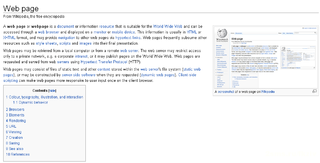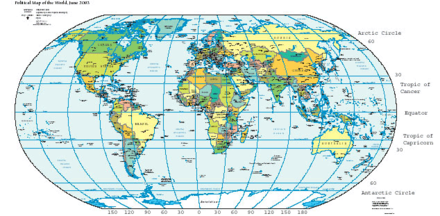An audio file format is a file format for storing digital audio data on a computer system. The bit layout of the audio data is called the audio coding format and can be uncompressed, or compressed to reduce the file size, often using lossy compression. The data can be a raw bitstream in an audio coding format, but it is usually embedded in a container format or an audio data format with defined storage layer.

Computer data storage is a technology consisting of computer components and recording media that are used to retain digital data. It is a core function and fundamental component of computers.
A codec is a device or computer program that encodes or decodes a data stream or signal. Codec is a portmanteau of coder/decoder.

Video editing software, or a video editor is software used for performing the post-production video editing of digital video sequences on a non-linear editing system (NLE). It has replaced traditional flatbed celluloid film editing tools and analog video tape editing machines.
Audio Video Interleave is a proprietary multimedia container format and Windows standard introduced by Microsoft in November 1992 as part of its Video for Windows software. AVI files can contain both audio and video data in a file container that allows synchronous audio-with-video playback. Like the DVD video format, AVI files support multiple streaming audio and video, although these features are seldom used.
A disk image is a snapshot of a storage device's structure and data typically stored in one or more computer files on another storage device. Traditionally, disk images were bit-by-bit copies of every sector on a hard disk often created for digital forensic purposes, but it is now common to only copy allocated data to reduce storage space. Compression and deduplication are commonly used to reduce the size of the image file set. Disk imaging is done for a variety of purposes including digital forensics, cloud computing, system administration, as part of a backup strategy, and legacy emulation as part of a digital preservation strategy. Disk images can be made in a variety of formats depending on the purpose. Virtual disk images are intended to be used for cloud computing, ISO images are intended to emulate optical media and raw disk images are used for forensic purposes. Proprietary formats are typically used by disk imaging software. Despite the benefits of disk imaging the storage costs can be high, management can be difficult and they can be time consuming to create.

Advanced Systems Format is Microsoft's proprietary digital audio/digital video container format, especially meant for streaming media. ASF is part of the Media Foundation framework.
An optical disc image is a disk image that contains everything that would be written to an optical disc, disk sector by disc sector, including the optical disc file system. ISO images contain the binary image of an optical media file system, including the data in its files in binary format, copied exactly as they were stored on the disc. The data inside the ISO image will be structured according to the file system that was used on the optical disc from which it was created.
Transcoding is the direct digital-to-digital conversion of one encoding to another, such as for video data files, audio files, or character encoding. This is usually done in cases where a target device does not support the format or has limited storage capacity that mandates a reduced file size, or to convert incompatible or obsolete data to a better-supported or modern format.
A hex editor is a computer program that allows for manipulation of the fundamental binary data that constitutes a computer file. The name 'hex' comes from 'hexadecimal', a standard numerical format for representing binary data. A typical computer file occupies multiple areas on the storage medium, whose contents are combined to form the file. Hex editors that are designed to parse and edit sector data from the physical segments of floppy or hard disks are sometimes called sector editors or disk editors.
A container format or metafile is a file format that allows multiple data streams to be embedded into a single file, usually along with metadata for identifying and further detailing those streams. Notable examples of container formats include archive files and formats used for multimedia playback. Among the earliest cross-platform container formats were Distinguished Encoding Rules and the 1985 Interchange File Format.

Electronic media are media that use electronics or electromechanical means for the audience to access the content. This is in contrast to static media, which today are most often created digitally, but do not require electronics to be accessed by the end user in the printed form. The primary electronic media sources familiar to the general public are video recordings, audio recordings, multimedia presentations, slide presentations, CD-ROM and online content. Most new media are in the form of digital media. However, electronic media may be in either analogue electronics data or digital electronic data format.
In computer science, storage virtualization is "the process of presenting a logical view of the physical storage resources to" a host computer system, "treating all storage media in the enterprise as a single pool of storage."

A content format is an encoded format for converting a specific type of data to displayable information. Content formats are used in recording and transmission to prepare data for observation or interpretation. This includes both analog and digitized content. Content formats may be recorded and read by either natural or manufactured tools and mechanisms.
In computing, virtualization or virtualisation is the act of creating a virtual version of something at the same abstraction level, including virtual computer hardware platforms, storage devices, and computer network resources.
Sidecar files, also known as buddy files or connected files, are computer files that store data which is not supported by the format of a source file.
A file format is a standard way that information is encoded for storage in a computer file. It specifies how bits are used to encode information in a digital storage medium. File formats may be either proprietary or free.

EPUB is an e-book file format that uses the ".epub" file extension. The term is short for electronic publication and is sometimes styled ePub. EPUB is supported by many e-readers, and compatible software is available for most smartphones, tablets, and computers. EPUB is a technical standard published by the International Digital Publishing Forum (IDPF). It became an official standard of the IDPF in September 2007, superseding the older Open eBook (OEB) standard.






